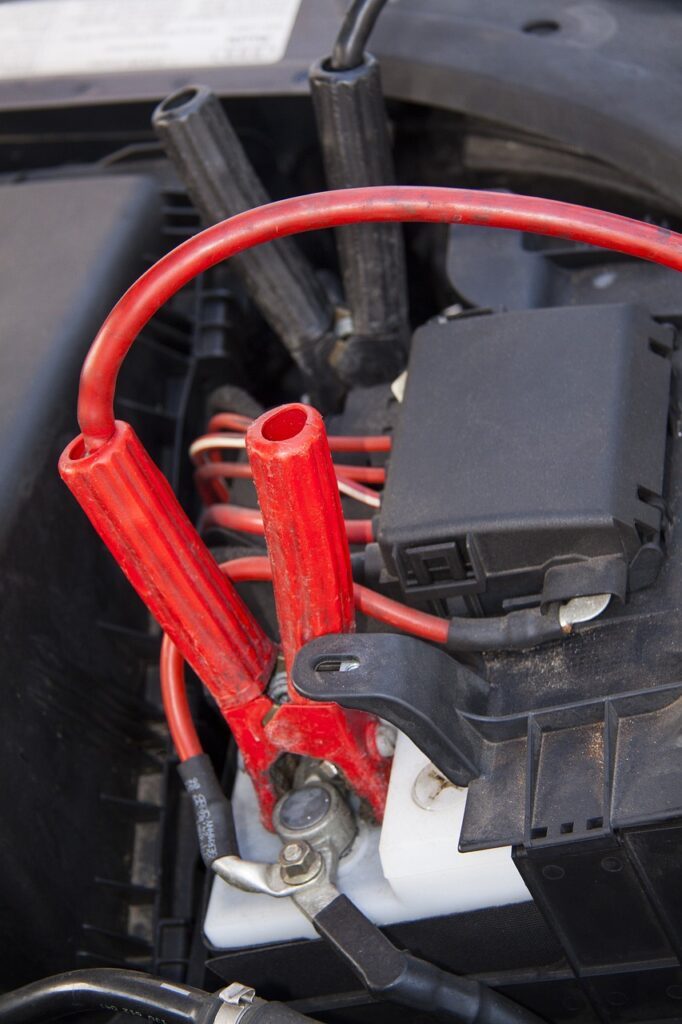Finding yourself with a dead car battery can be frustrating, especially when you’re on the go. However, with the right tools and knowledge, you can safely jump-start your car in no time. This comprehensive guide will show you the best way to jump-start a dead battery, whether you have jumper cables, a portable jump starter, or even a solar charger on hand.

Why Knowing How to Jump-Start Your Car is Essential
A dead car battery can happen unexpectedly—whether it’s from leaving your lights on, cold weather, or an older battery. Knowing how to jump-start a car is an essential skill that can save you time and money when you find yourself stuck. Being prepared with the right tools and understanding the correct procedures can make all the difference.
Tools You Need to Jump-Start a Car
Before you begin, gather the necessary tools. Here’s a quick list of must-haves:
- Owner’s manual: Always check your car’s manual for any specific jump-starting instructions.
- Jumper cables: These should be at least 10 feet long and in good condition (no rust or fraying).
- A working car: The second vehicle must have the same voltage (typically 12 volts) as the car you’re jump-starting.
- Portable jump starter: A compact and convenient alternative to using another vehicle.
- Safety gloves and eye protection: To protect yourself from sparks, acid, or battery-related accidents.
- Battery terminal cleaning supplies: If the terminals are dirty or corroded, clean them first with baking soda, water, and a soft cloth.
Step-by-Step Instructions: How to Jump-Start a Car with Jumper Cables
Follow these detailed steps for the safest and most effective jump-start:
- Prepare Both Cars
Park the working car close to the dead car, ensuring they are both turned off and the parking brakes are engaged. Make sure both vehicles are in neutral or park mode. - Check the Battery Terminals
If the battery terminals are dirty or corroded, clean them with a rag and battery terminal cleaner. - Connect the Jumper Cables Correctly
Always connect the cables in the right order to avoid sparks and damage:- Red clamp: Attach one red clamp to the positive (+) terminal of the working car’s battery.
- Red clamp (second): Attach the other red clamp to the positive (+) terminal of the dead battery.
- Black clamp: Attach one black clamp to the negative (-) terminal of the dead battery.
- Black clamp (second): Attach the remaining black clamp to an unpainted metal surface of the working car (preferably on the engine block).
- Start the Working Car
Let the working car run for a few minutes to send a charge to the dead battery. - Attempt to Start the Dead Car
Try to start the car with the dead battery. If it doesn’t start immediately, wait a few more minutes and then try again. - Disconnect the Jumper Cables
Once the dead car starts, remove the cables in the reverse order:- Black clamp from the engine block of the working car.
- Black clamp from the dead battery.
- Red clamp from the dead battery.
- Red clamp from the working car.
- Keep the Car Running
Keep the engine of the revived car running for 20-30 minutes, or take it for a short drive to help recharge the battery. If the car doesn’t stay running or struggles to restart, you may need to replace the battery.
How to Jump-Start a Car Without Another Vehicle
If you don’t have a second car available, a portable jump starter is an excellent tool to have in emergencies. Here’s how to use it:
- Connect the Portable Jump Starter
Attach the red clamp to the positive (+) terminal of the dead battery and the black clamp to an unpainted metal surface on the car. - Turn on the Jump Starter
Follow the manufacturer’s instructions for your specific model, and power it on. - Start the Car
Once the jump starter is connected and activated, attempt to start the car. If the car starts, let it run for 20-30 minutes to recharge the battery. - Disconnect the Jump Starter
Disconnect the jump starter in the reverse order, starting with the black clamp.
Troubleshooting: What If Your Car Won’t Start After Jump-Starting?
If your car refuses to hold a charge after a jump-start, here are some potential causes:
- Battery Age: Car batteries typically last 3-5 years. If your battery is older, it may need to be replaced.
- Corroded Terminals: Corrosion on battery terminals can interfere with the connection and prevent the car from starting.
- Faulty Alternator: The alternator charges the battery while the car is running. If it’s malfunctioning, your battery won’t stay charged.
- Parasitic Drain: Electrical components like interior lights or a faulty relay can drain your battery even when the car is off.
If you suspect an underlying issue, visit a mechanic to get a full battery and alternator check.
Jump-Starting a Car with Solar Trickle Chargers
If you’re in a remote area or need a slower, more sustainable charging option, a solar trickle charger might be a great solution. These chargers use solar energy to slowly charge your car’s battery, making them ideal for long-term battery maintenance. However, it may take longer than traditional methods, so use it for emergencies or keeping your battery topped up during extended periods of inactivity.
How to Avoid a Dead Battery in the Future
- Regular Maintenance: Inspect your battery terminals and clean them to avoid corrosion.
- Drive Regularly: Make sure to drive your vehicle often enough to keep the battery charged.
- Replace the Battery When Needed: Don’t wait too long if your battery is reaching the end of its lifespan.
- Consider a Trickle Charger: Using a solar or conventional trickle charger can help keep your battery charged and ready to go, especially during long periods of inactivity.
Additional Resources
- How to Maintain Your Car Battery for Longevity
- The Best Portable Jump Starters for Emergencies
- The Top Solar Trickle Chargers for Car Batteries
By following this comprehensive, step-by-step guide, you can confidently handle a dead car battery situation. Remember, preparation is key—having the right tools and knowledge will save you from the stress and frustration of a battery failure.
Engage with Us
Have you had an experience jump-starting your car? Share your tips or ask any questions in the comments below! Let us know how we can help.



